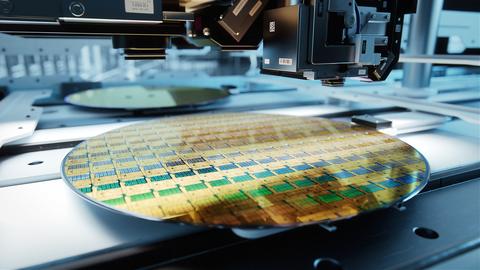NIST Report Outlines Strategic Opportunities for U.S. Semiconductor Manufacturing

Metrology is needed at all stages of semiconductor technology development, from R&D in the laboratory to prototyping, fabrication, assembly and packaging, and performance verification.
GAITHERSBURG, Md. — The U.S. Department of Commerce’s National Institute of Standards and Technology (NIST) has released a report outlining seven strategic “grand challenges” in measurement, standardization, and modeling and simulation that, if met, will strengthen the U.S. semiconductor industry.
“The measurement challenges impacting the U.S. semiconductor industry are at a critical stage and must be addressed if we are to ensure U.S. leadership in this important sector,” said Under Secretary of Commerce for Standards and Technology and NIST Director Laurie E. Locascio. “We’ve received extensive feedback from stakeholders across industry, academia and government that will help us provide urgently needed measurement services, standards, manufacturing methods and test beds and build even stronger partnerships with this industry.”
NIST is the only national laboratory dedicated to measurement science, or metrology, and the recently enacted CHIPS and Science Act calls on NIST to conduct critical metrology research and development (R&D) in support of the domestic semiconductor industry to enable advances and breakthroughs for next-generation microelectronics. Metrology is needed at all stages of semiconductor technology development, from basic and applied R&D in the laboratory to demonstrating proof of concept, prototyping at scale, factory fabrication, assembly and packaging, and performance verification prior to final deployment. As devices become smaller and more complex, the ability to measure, monitor, predict and ensure quality in manufacturing becomes much more difficult.
“We’ve received extensive feedback from stakeholders across industry, academia and government that will help us provide urgently needed measurement services, standards, manufacturing methods and test beds and build even stronger partnerships with this industry.” —NIST Director Laurie E. Locascio
The report released today draws on input received through a series of Semiconductor Metrology Workshops convened by NIST that brought together more than 800 participants from industry, academia and government. Input was also gathered through a Department of Commerce Request for Information and direct feedback from industry.
Six of the seven grand challenges identified focus on the following: developing metrology for materials purity and properties; future microelectronics manufacturing; advanced packaging to integrate separately manufactured components; enhancing the security of devices across the supply chain; improving tools for modeling and simulating semiconductor materials, designs and components; and improving the manufacturing process. The final challenge highlights the need for standardizing new materials, processes and equipment.
“Strategic Opportunities for U.S. Semiconductor Manufacturing: Facilitating U.S. Leadership and Competitiveness through Advancements in Measurements and Standards” can be found on the NIST website. The Department of Commerce and NIST also released today a report that provides a summary of the January 2022 Request for Information that helped to inform the grand challenges.

